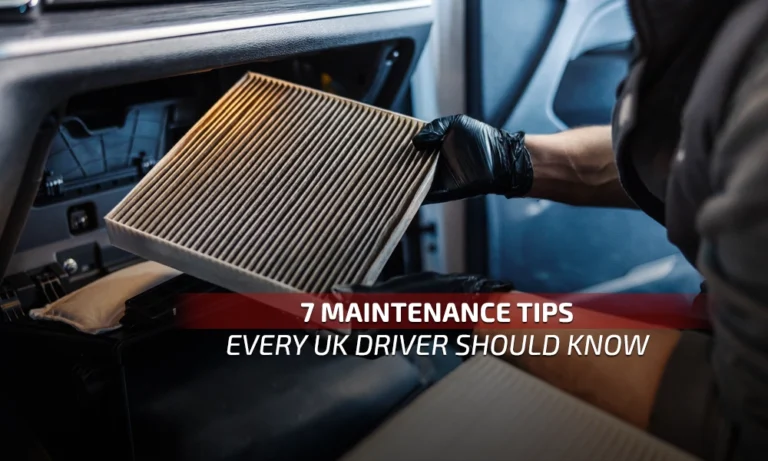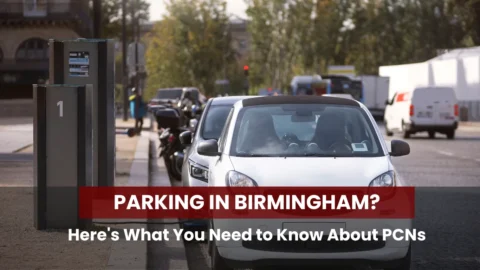Owning a classic British sports car is like owning a piece of living history.
Whether it’s a Triumph TR6, an MGB GT, or a Jaguar E-Type, these cars turn heads—but they also demand more attention than modern vehicles.
If you drive one in the UK, here’s how to keep it running sweet without getting caught out on a rainy Sunday drive.
1. Protect Against Rust—It’s the UK’s #1 Classic Car Killer
British cars from the ’50s to ’80s were never built with UK weather in mind.
Rain, salty roads, and moisture in the air all wreak havoc on underbodies and sills.
- Apply wax-based rustproofing annually (Bilt Hamber and Dinitrol are trusted brands)
- Check common rust points: wheel arches, floorpans, bulkheads, and battery trays
- Store indoors with a dehumidifier if possible—or invest in a breathable car cover
TIP: Even small bubbles under the paint can mean deeper corrosion. Don’t ignore them.
2. Use the Right Engine Oil—Not Just Whatever’s on Sale
Classic engines weren’t designed for today’s low-viscosity oils.
Using the wrong type can lead to leaks, poor lubrication, and increased wear.
- Use 20W-50 mineral oil unless your owner’s manual specifies otherwise
- For high-performance models, consider classic-specific oils with zinc (ZDDP) additives
- Change oil every 3,000–5,000 miles or annually, whichever comes first
Brands like Millers, Penrite, and Castrol Classic are tailored for older British engines.
3. Stay Ahead of Electrical Gremlins (Yes, We’re Looking at You, Lucas)
Lucas electrics are part of the charm—and the challenge.
Faulty grounds, brittle wiring, and flaky connectors can lead to all sorts of intermittent issues.
- Clean and tighten all earth points and fuses once or twice a year
- Replace old bullet connectors with modern equivalents if originality isn’t critical
- Keep a multimeter and a wiring diagram in the boot—you’ll thank yourself later
4. Maintain Carburetors and Fuel Delivery Systems
SU and Stromberg carbs work beautifully—when tuned.
But ethanol in today’s UK petrol can cause issues with rubber seals and diaphragms.
- Use ethanol-resistant fuel hoses and carb kits (E5-compatible at minimum)
- Add a fuel stabiliser if you drive infrequently
- Balance the carbs using a vacuum gauge or take it to a specialist for tuning
TIP: Avoid E10 fuel if possible—many classic owners report rougher running and perished seals.
5. Watch the Cooling System—Old Radiators Aren’t Forgiving
Overheating is a common issue, especially during UK summers or slow traffic.
- Flush the radiator annually and inspect for sediment buildup
- Upgrade to a modern aluminium radiator or electric fan for daily driving
- Always keep a spare coolant bottle in the boot
A stuck thermostat or cracked hose can leave you stranded. Prevention saves time and cash.
6. Check the Suspension and Bushings Regularly
Classic British roadsters are known for their feel—but rubber bushings don’t last forever, and sagging springs can ruin the drive.
- Grease all grease points (many cars still use kingpins)
- Inspect shock absorbers, trunnions, and leaf springs at least once per MOT cycle
- Consider polyurethane bush upgrades if you want longer life without sacrificing comfort
7. Don’t Skip the MOT—Even if You’re Exempt
In the UK, cars over 40 years old are MOT-exempt—but that doesn’t mean they’re roadworthy.
- Do a self-check of lights, brakes, tires, and fluid leaks every few months
- Book an annual classic car inspection at a trusted garage
- Keep a logbook of maintenance and service intervals—helps with resale and reliability
Remember, you’re still legally responsible for keeping your car safe, MOT or not.
Some Questions You May Have
Yes, and it’s often cheaper than regular cover. Many providers offer agreed value policies, mileage limits, and restoration coverage.
Yes, but only if the car hasn’t been substantially modified. You must still keep it in roadworthy condition by law.
Technically yes, but it’s not ideal. E5 (super unleaded) is better for fuel lines and rubber components. Use additives if needed.
A dry, insulated garage with a battery maintainer and breathable cover. Avoid damp sheds or leaving it parked on wet grass.
Specialist suppliers like Moss Europe, Rimmer Bros, and British Motor Heritage offer everything from body panels to original-style wiring looms.
Maintenance Is The Real Endgame
You might have heard people say “buying is just the beginning, the real pain is in maintaining it” and I agree!
When it comes to purchasing a car, I’ve already told every one of my friends and family, to always consider the maintenance side of the car.
Can you take care of it in case of a engine blockage?
Will you keep it unserviced for long periods of time?
Will you check the treads of your tyres every now and then?
I feel maintenance is one of the most important factors you need to take into account before thinking of buying a car.
Sure, you may be able to afford a $150k car, with financing and other help, but what happens when it breaks down, or needs repair?
You cannot finance the repair costs, or the spare parts cost.
When you are certain, that your finances can handle the maintenance of the car you are planning to buy, that is when you should go and get that car. Source Details https://www.footmanjames.co.uk/







